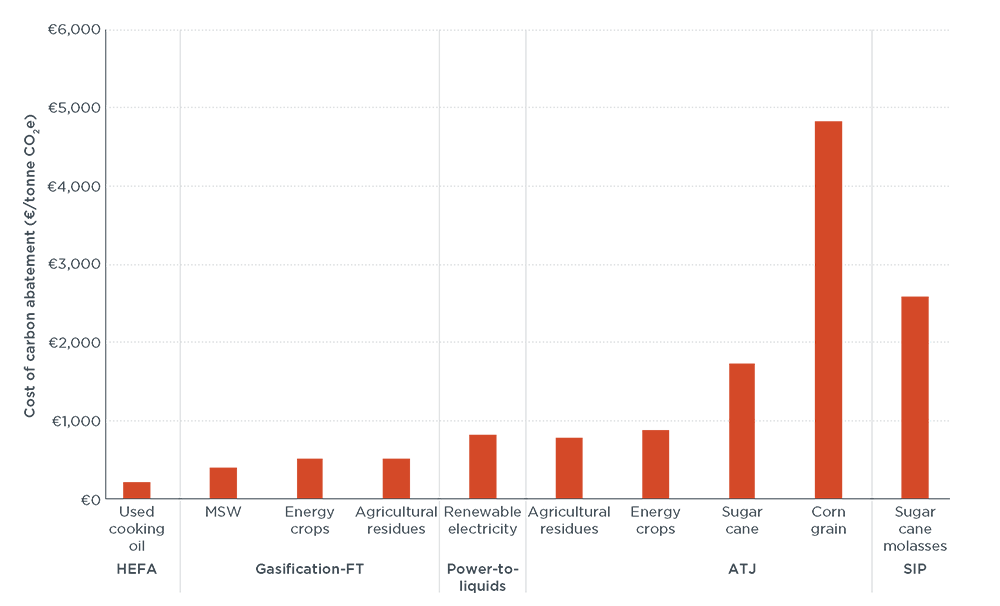An assessment of the policy options for driving sustainable aviation fuels in the European Union
Working Paper
The cost of supporting alternative jet fuels in the European Union
Alternative jet fuels (AJFs) are among the few available in-sector approaches to reduce aviation sector emissions. Although the aviation sector has not played a prominent role in fuels policy to date, policymakers are increasingly incorporating aviation fuels into long-term strategies as the road sector is electrified. This report reviews the existing literature on the economics of AJF production and assesses the costs of production for a selection of AJF conversion technologies, incorporating life-cycle greenhouse gas (GHG) emissions accounting into the economic analysis of AJF production and identifying the AJF production pathways that offer the most cost-effective carbon reductions.
This study finds that different AJF pathways have widely varying levelized production costs & carbon abatement potential. While fuels made from waste fats and oils [i.e., hydroprocessed esters and fatty acids (HEFA)] are the cheapest fuels to manufacture, their carbon reductions can be non-existent if made from fuels with high indirect land-use change (ILUC) emissions. In contrast, we find that fuels made from low-carbon feedstocks, such as municipal solid waste (MSW) and agricultural residues, provide more cost-effective carbon reductions than conventional, food crop-based fuels, despite their higher production costs.

Overall, we find that the cost of producing even the cheapest AJF is much high than the cost of petroleum, necessitating substantial policy support for them to reach the market. The cost of carbon reductions from fuel switching is estimated to be generally an order of magnitude higher than most carbon offsets. This study finds that prioritizing aviation fuels within fuels policies, such as the use of an aviation fuel credit multiplier, can create perverse incentives. Prioritizing AJFs can incentivize alternative fuel producers to optimize for maximizing jet fuel yield, thus reducing their facility’s overall efficiency and reducing output of road fuels. In contrast, policies that more generally support the use of lignocellulosic and waste feedstocks and mitigate risks of high capital cost projects would do more to facilitate the long-term development of a low-carbon AJF industry.
